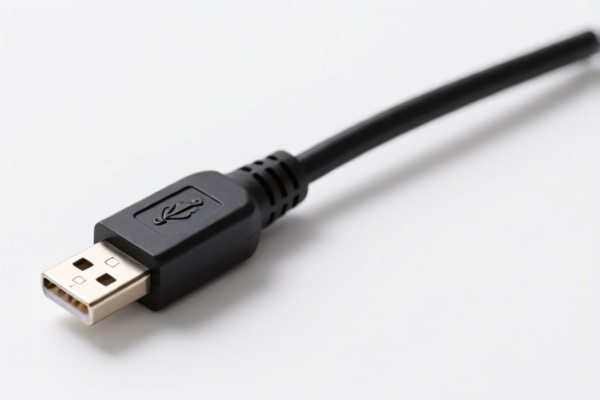| HS Code | Official Doc | Tariff Rate | Origin | Destination | Effective Date |
|---|---|---|---|---|---|
| 5607909000 | Doc | 61.3% | CN | US | 2025-05-12 |
| 7218990090 | Doc | 30.0% | CN | US | 2025-05-12 |
| 7217905090 | Doc | 30.0% | CN | US | 2025-05-12 |
| 3926909905 | Doc | 42.8% | CN | US | 2025-05-12 |
| 7616995175 | Doc | 57.5% | CN | US | 2025-05-12 |




Cable Tie
A cable tie, also known as a zip tie, is a fastener used to bundle multiple items together. It consists of a flexible strip of material, typically plastic, with a one-way ratcheting mechanism.
Material
- Nylon 6,6: The most common material, offering good tensile strength, flexibility, and a wide operating temperature range.
- Nylon 6: Less expensive than Nylon 6,6 but with lower tensile strength and temperature resistance.
- Polypropylene: Lower strength and temperature resistance than nylon, but more resistant to chemicals. Often used for lighter-duty applications.
- Stainless Steel: Used in applications requiring high strength, high temperature resistance, and corrosion resistance.
- Coated Metal: Metal ties with a protective coating for increased durability and corrosion resistance.
Purpose
Cable ties are used for a wide variety of bundling and securing applications, including:
- Cable Management: Organizing and securing electrical cables behind electronics, in server racks, and within equipment.
- General Bundling: Securing items like ropes, hoses, tools, and other objects.
- Temporary Fastening: Providing a quick and easy method of fastening items together.
- Plant Support: Supporting plants and vines.
- Crafts and DIY Projects: Used in a variety of creative applications.
Function
The cable tie functions by looping the flexible strip through a buckle, then pulling the strip tight to create a secure bundle. The ratcheting mechanism prevents the tie from loosening once tightened. The tie is typically cut with scissors or a dedicated cable tie cutter to remove it.
Usage Scenarios
- Home: Organizing cables behind TVs, computers, and other electronics.
- Office: Cable management in server rooms and workstations.
- Industrial: Securing cables and wires in manufacturing plants and construction sites.
- Automotive: Bundling wires and hoses in vehicles.
- Gardening: Supporting plants and vines.
- Electronics: Bundling wires within electronic devices.
Common Types
- Standard Cable Ties: The most common type, available in a variety of lengths, widths, and colors.
- Heavy-Duty Cable Ties: Thicker and stronger ties for heavier-duty applications.
- UV-Resistant Cable Ties: Designed for outdoor use, resistant to degradation from sunlight.
- Self-Locking Cable Ties: Feature a locking mechanism that prevents accidental opening.
- Releasable Cable Ties: Can be opened and reused.
- Colored Cable Ties: Used for color-coding and identification.
- Photoelectric Cable Ties: Used for security applications, featuring a break-away head that triggers an alarm when cut.
- Expandable Cable Ties: Made of woven material and can be expanded to bundle larger items.
- Bucket Ties: Designed for securing lids to buckets.
Based on the provided information, identifying the precise HS code for "cable tie" requires careful consideration of its material composition. The following HS codes may be relevant:
- 3923900080: Articles for the conveyance or packing of goods, of plastics; stoppers, lids, caps and other closures, of plastics: Other Other. This code covers articles of plastics used for packing goods, which could include cable ties if they are primarily used for bundling or securing items for transport or storage. The total tax rate is 58.0% (3.0% basic tariff + 25.0% additional tariff + 30.0% additional tariff after 2025.4.2).
- 3926905000: Other articles of plastics and articles of other materials of headings 3901 to 3914: Other: Frames or mounts for photographic slides. While seemingly unrelated, this code falls under "other articles of plastics," and cable ties could potentially be classified here if they don't fit neatly into the packing goods category. The total tax rate is 41.3% (3.8% basic tariff + 7.5% additional tariff + 30.0% additional tariff after 2025.4.2).
- 3926909987: Other articles of plastics and articles of other materials of headings 3901 to 3914: Other: Other Rigid tubes or pipes suitable for use as electrical conduit. This code also falls under "other articles of plastics," and could be relevant if the cable ties are rigid and used in electrical applications. The total tax rate is 42.8% (5.3% basic tariff + 7.5% additional tariff + 30.0% additional tariff after 2025.4.2).
According to the provided reference material, the HS code options related to 'cable tie' are limited, with only the following 3 found.
It is important to note that the final classification will depend on the specific material composition and intended use of the cable ties. If the cable ties are made of copper or iron/steel, other HS codes may be applicable.
Customer Reviews
No reviews yet.